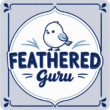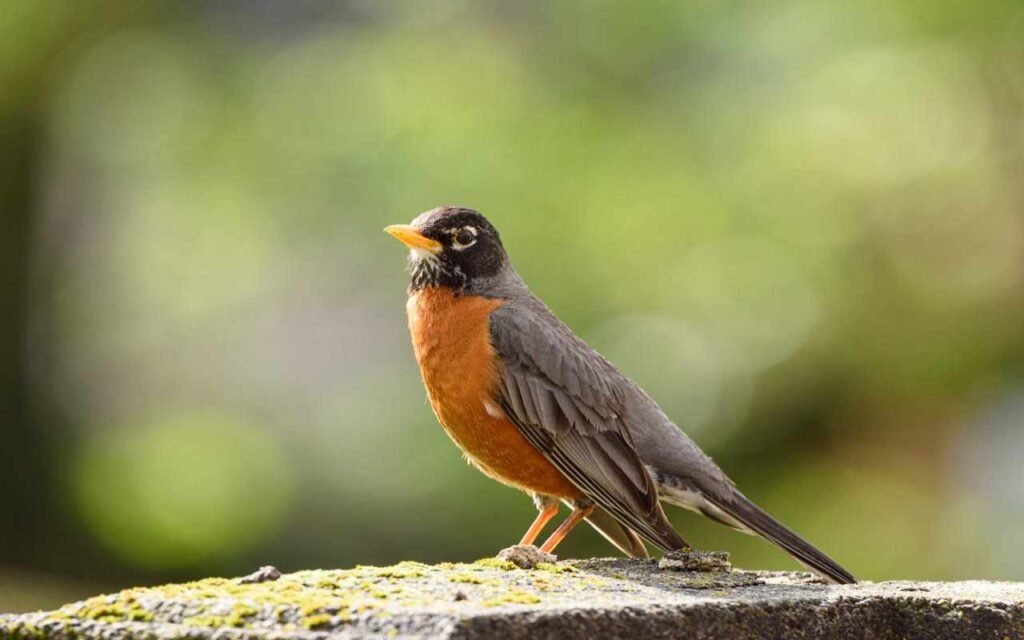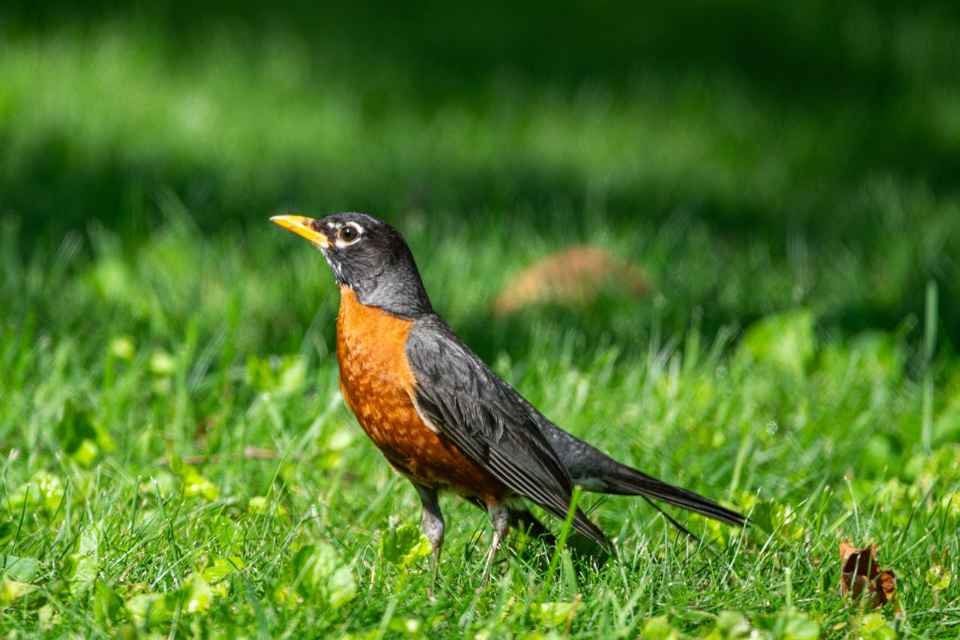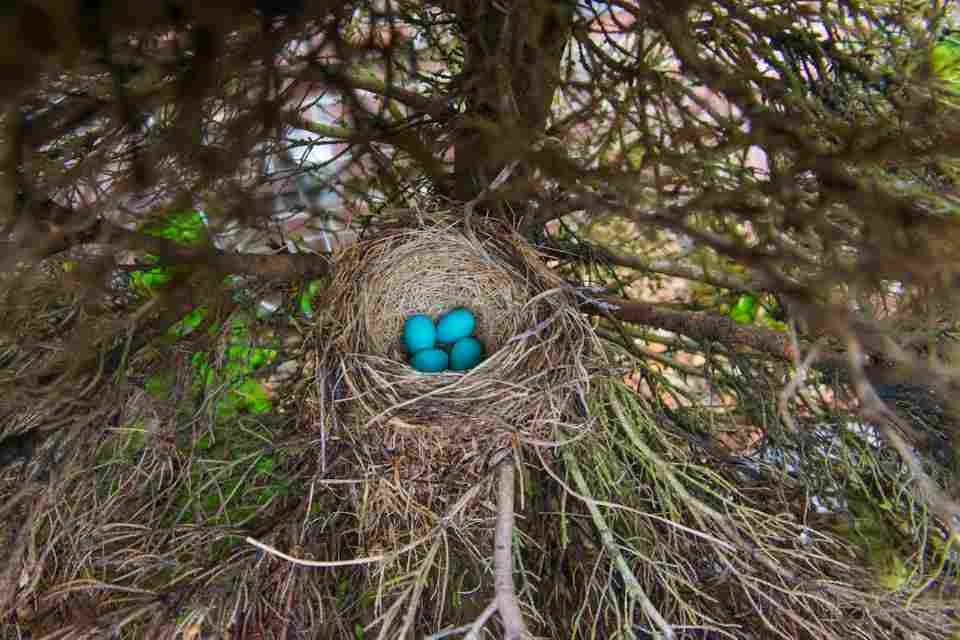You know that moment when you glance outside and see a bird hopping across your lawn like it’s on a mission? 😲 Orange belly, confident strut, head cocked like it’s listening for secrets underground? If you’re wondering how to identify an American Robin in your backyard, congratulations, you’ve probably just spotted one.
These birds are so common that people often overlook them. But once you actually stop and pay attention, you’ll realize they’re one of the most interesting, easy-to-recognize birds in your backyard.
I’ve been birdwatching casually for years, and robins were one of the first birds I learned to ID without a field guide. Honestly, they kind of force you to notice them, they’re bold, loud, and not shy about raiding your lawn for worms while you’re standing just ten feet away.
So, how can you be sure you’re looking at a robin and not a lookalike? Let’s break it down step by step.
Quick ID: American Robin
- Orange-red breast (bright in males, paler in females, spotted in juveniles)
- Gray back, dark head, white eye ring
- Worm-hunting hop + head tilt
- Cheerful “cheerily cheer-up” song
- Sky-blue eggs in cup-shaped mud nests
American Robin Breast Color (Orange-Red)
If American Robins had a fashion trademark, it would be their orange-red chest.
- Males have a darker, richer red-orange that almost glows in sunlight.
- Females look more muted, with a paler orange and softer tones overall.
- Juveniles are the real curveball: their chests are spotted and streaky, looking more like speckled thrushes than robins.
I still remember the first time I spotted a juvenile in my yard. I thought, “Who invited this messy teenager to the party?” But sure enough, a few weeks later, it molted into that classic robin look.
If the chest isn’t orange in some form, you’re not looking at a robin.
Head and Back Color
Sure, the belly gets all the press, but the head and back seal the deal.
- Adult males: Dark gray to black heads with a sharp contrast to the orange belly.
- Females: More gray than black, blending a little more smoothly into the back.
- Back and wings: Slate-gray, with no strong striping or wing bars like some lookalikes.
That dark head gives the male robin a bold, serious look, like he’s ready to audition for a bird mobster movie.
The White Eye Ring
Robins wear a subtle fashion accessory: a white eye ring.
It’s not thick or flashy, but once you notice it, you’ll see it every time. It looks like they’re wearing faint eyeliner. This tiny feature is often the difference between a robin and a Varied Thrush or Eastern Towhee, which lack that clean ring.
Next time you spot a bird with an orange belly, zoom in or look through your binoculars for that ring, it’s a dead giveaway.
American Robin Behavior in Backyards
Robins act differently than many backyard birds, and behavior can be a huge ID clue.
- They hop, stop, and tilt their head toward the ground before pouncing on worms.
- They often patrol open lawns and fields rather than staying deep in trees.
- When perched, they hold an upright stance instead of crouching like sparrows.
Fun fact: robins don’t actually see worms underground. They’re listening for movement. So, that dramatic head tilt? It’s basically their version of radar.
I once watched one nail three worms in five minutes, and I couldn’t help but clap like it was a backyard talent show.
American Robin Song and Calls
If you live in North America, chances are a robin has woken you up at some point.
Song:
- Cheerful, whistled notes: “cheerily, cheer-up, cheerio.”
- Smooth, not raspy. Repeats in different patterns.
Calls:
- Tut-tut-tut alarm sound when they’re agitated.
- A sharp peek note for quick communication.
Hear the Sounds and Calls of the American Robin
FYI, robins are some of the earliest singers at dawn. They’re the “morning people” of the bird world. Unfortunately, that means they think 4:30 a.m. is a perfectly acceptable time to start belting out tunes outside your bedroom window. :/
Seasonal Clues and Migration
Robins give away a lot based on the time of year.
- Spring/Summer: Everywhere. Singing, nesting, worm hunting.
- Fall: Gathering in big flocks, switching to berry-heavy diets.
- Winter: In many northern areas, they migrate south. In warmer climates, they stick around.
One winter I saw about 30 robins in a single holly tree in my neighborhood. It looked like a robin convention, and every single one had a berry in its beak.
Migration map tip:
- Northern U.S. and Canada: Expect them mostly in spring and summer.
- Southern states: You’ll often see them year-round.
- Range Map: See where robins live year-round and seasonally on the Range Map.
- Sightings Map: Check real-time observations of robins across North America on the Sightings Map.
Size and Shape
Robins are bigger than sparrows but smaller than crows. Think “mid-sized sedan” in the bird world.
- Length: 9–11 inches
- Wingspan: 12–16 inches
- Weight: About 2.7 ounces
Their long legs make them look taller than many other songbirds, especially when they’re hopping across your yard like they own it.
Tail and Flight Patterns
When robins fly, watch their tail. You’ll often spot white edges on the outer feathers.
Their flight is direct but not super fast, with a few wingbeats followed by short glides. It’s not as frantic as finches or sparrows.
Nests and Eggs
Robins are famous for their nests.
- Shape: Cup-shaped, made of grass, twigs, and mud as cement.
- Location: Tree branches, ledges, porch lights (trust me, I’ve had one over mine).
- Eggs: That unmistakable robin’s egg blue, so iconic it became its own paint color.
Robin chicks look hilariously awkward at first: giant yellow mouths, patchy feathers, and a constant demand for food. Within a couple of weeks, though, they’re hopping after their parents, learning the worm-hunting ropes.
Lookalikes and How to Tell Them Apart
Some birds can fake you out if you’re not paying attention:
- Varied Thrush: Looks similar, but has a bold black band across its chest and orange wing bars.
- Eastern Towhee: Black head, orange sides, but white belly (not orange).
- Orchard Oriole: Smaller, darker, and usually found in different habitats.
When in doubt, fall back on the orange breast + white eye ring + worm-hunting hop. That trio rarely lies.
What Robins Eat
Yes, robins love worms, but that’s only part of the story.
Diet includes:
- Worms and insects in spring and summer.
- Berries and fruits in fall and winter.
If you want to attract them, plant berry bushes like serviceberry, holly, dogwood, or chokecherry. They’ll treat your yard like a buffet line.
Fun Robin Trivia
- Robins are actually in the thrush family, not related to European Robins (different bird entirely).
- Their population is estimated at 310 million, that’s a lot of worms getting eaten.
- They’re one of the few birds almost everyone in North America recognizes.
And here’s one you’ll appreciate: robins are technically “migratory birds,” but many stick around in the north through winter, you just don’t notice them because they hang out in trees instead of lawns.
Beginner Birding Tips for Spotting Robins
If you’re just getting started with bird ID:
- Keep a small notebook or birding app handy.
- Note behavior as much as color, behavior often confirms ID.
- Use binoculars for details like eye rings.
- Take photos with your phone if possible.
And IMO, don’t sweat mistakes. Everyone mistakes a juvenile robin for something else the first time. It’s like a rite of passage in birding. 🙂
My Favorite Robin Story
One spring, I had a robin build a nest right above my porch light. She raised three chicks while I basically watched like a reality TV show every day. The day they fledged, the yard was pure chaos, three half-feathered babies hopping around, mom and dad darting back and forth with worms, and me standing there like a nervous babysitter.
That’s when I realized backyard birdwatching is way more entertaining than half the shows on Netflix.
Final Thoughts
The American Robin isn’t just “another bird in the yard.” Once you know what to look for, you realize how unique and easy to spot they are.
Remember these ID tips:
- Orange-red chest (male brighter, female paler, juveniles spotted)
- Gray back and dark head (with white eye ring)
- Worm-hunting hop and head tilt
- Cheerful whistled song
- Cup-shaped mud nests with blue eggs
Once you learn these, you’ll never confuse a robin again. And honestly, it makes your backyard feel a lot more alive when you can put a name to the bird that’s been belting out tunes at sunrise.
So, next time you see that flash of orange in your lawn? Smile, because you’ve officially met the American Robin, your not-so-subtle backyard neighbor.




